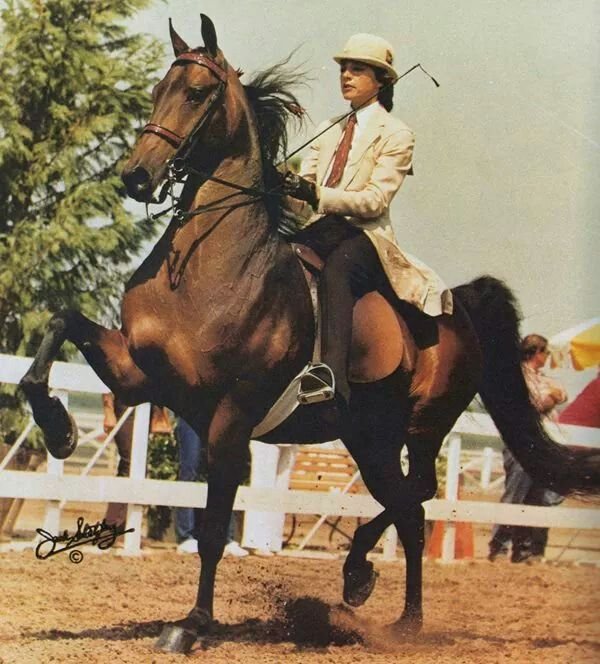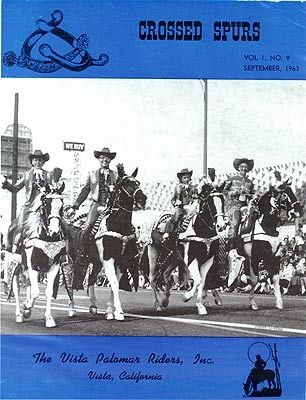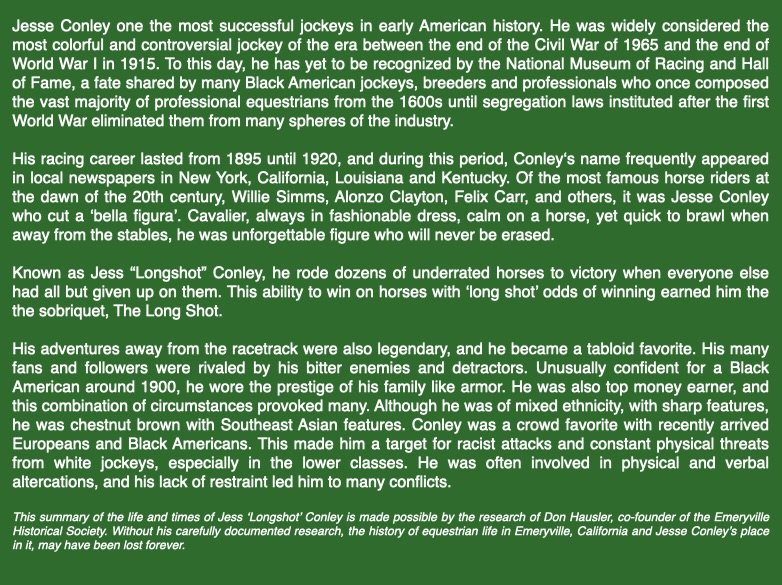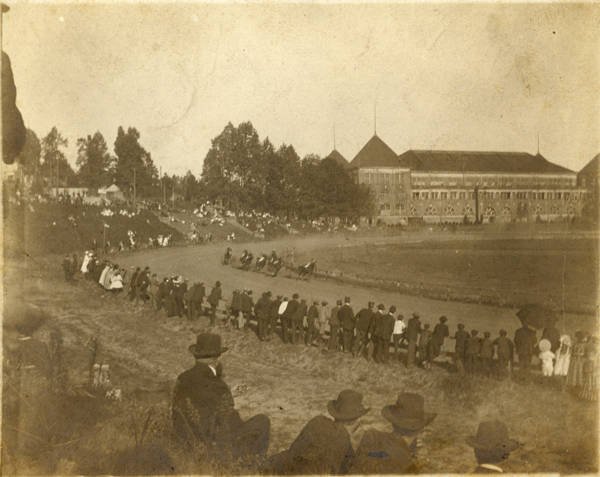THE CONLEY EQUESTRIAN LEGACY
For two centuries, the Conley Family equestrian legacy has touched nearly every aspect of the equestrian world. Starting with stable construction, then onto horse breeding and training, the family quietly pursued a single standard of excellence recognized by U.S. Presidents from Monroe to Reagan. The Family’s success in breeding, training, and riding spanned the gamut from Flat Racing and Steeple Chase to Carriage Driving and Endurance, and most famously, Saddlebred Pleasure.
The tradition would culminate in the equine champion sisters Michele Davis MacFarlane and Roxanne Davis Greene, as well as Rebecca Erin Greene, all three women descendants of Everett Conley Davis, an equestrian lawyer and grandson of Quartermaster Paschal Conley Jr. More on The Conley Equestrian Legacy:
The family’s initial regional prominence came from the related economy around horses at the dawn of the 1800s, when equestrian events were center of outdoor social life for the landholding classes. The Conley Brothers smartly leveraged their connection to landed gentry and planter class of era upon the death of John Oldham Connally. Of specific interest were flat racing, steeple chase, fox hunting, and carriage racing events. Led by brother-in-law Green Conley, the sons of James Conley thrived with a series of businesses in horse breeding, training, boarding, carriage making, and stable building long after James Conley’s death.
The Brothers smartly leveraged their connection to landed gentry.Successes in the artisan and merchant elements of the horse trade, soon included new commercial successes in barn & stable construction, masonry, metalworks & ironworks, as the antebellum South moved West in a dramatic economic expansion. The Conley Family operated livery stables, blacksmith shops, wheelwright and carriage repair garages with great success.
(From left to right) sister Roxanne, father Everett Conley, Michele, mother Ellen Browning. 1962 Rose Parade.
Michele Davis Macfarlane
Saddle Seat equitation
Michele Davis Macfarlane is one of the most important figures in the history of Saddle Seat competition. Saddle seat is a style of horse riding within the category of English riding that is designed to show off the power, grace and extravagant gaits of certain horse breeds.
Michele is the winner of multiple World's Grand Championship titles for five-gaited Saddlebreds, and the first woman to do so. She won an unprecedented five (5) championships at the Kentucky State Fair - the largest horse show in the world.
In 2020 she was awarded the Pegasus Medal of Honor, the highest award for lifetime achievement in the equestrian world. The Pegasus Award is determined by votes of U.S. Equestrian Federation members.
Her skills in standard gaits of walk, trot, and canter, won her fans worldwide. After her career in competition, she turned to exhibition, and performed before the Royal Families in Japan and Britain.
In her retirement, Michele is an exhibitor of classic stage coaches, a tradition begun by her 3rd great-uncle John Conley, a wheelwright and manufacturer of stage coaches in Huntsville, Alabama in the 1840s. Each New Year’s Day, she leads the equestrian procession of the Rose Parade. Every January 1, she treats parade audiences to a different cultural theme for her carriages, riding costumes, and horse tack.
Michele is the daughter of Everett Conley Davis, and great-granddaughter of Quartermaster Pascal Conley (who rode with Teddy Roosevelt in the Spanish-American War). Through this bloodline, she is 2x-great-granddaughter of Pascal Conley Sr., and 3x-great-granddaughter of James Conley, the stable master who managed horses for U.S. Presidents Polk, Jackson and Monroe while Head Groom at the Green Bottom Inn sporting facility in the early 1800s.
Michele Davis Macfarlane has presented for President Ronald Reagan and the royal families of Britain, Japan, other high profile dignitaries of foreign countries.
The subject of countless articles in horse publications, Michele Davis Macfarlane is a legendary figure in the Saddle Seat category. For more than 60 years, she has thrilled audiences worldwide as a breeder, rider, and carriage driver.
Roxanne Davis Greene
Endurance Riding
Roxanne Davis Greene, Tevis Cup champion. Video Clip courtesy of HRTV
Rebecca Erin Greene
Endurance Riding
Rebecca Erin Greene Ball is the granddaughter of Everett Conley Davis, great-great-granddaughter of Sgt. Quartermaster Pascal Conley (who rode with Teddy Roosevelt in the Spanish-American War), and 3x-great-granddaughter of Pascal Conley Sr., and 4x-great-granddaughter of James Conley, equerry and stable master who managed horses for Presidents Polk, Jackson and Monroe.
Rebecca has blazed her own trail with her record setting participation in the The Western States Trail ride, popularly called the Tevis Cup. The competition is solitary test of physical and psychological stamina for both horse and rider, and is considered one of the world's best known and most difficult equestrian endurance rides. Yet, Rebecca conquered the trail as youth an astounding 10 times as a junior rider. She was the youngest participant to earn the 1,000 mile buckle, one of the sport’s highest honors.
JESS ‘LONGSHOT’ CONLEY
RACING LEGEND
Earlier, Flat Racing legend Jess ‘Longshot’ Conley would grace the winners circle at the Kentucky three times riding Han d'Or in 1898, Mazo in 1899, then Colston in 1911. In-laws Carl & Essie Sitgraves would enjoy 50 legendary years of champion thoroughbred breeding.
From 1895 until 1915, Jess ‘Longshot’ Conley was a nationally known jockey for his exceptional long career, raucous behavior off the track, and his rivalries with British riders. Jess Conley’s career began in Kentucky, then advanced to Chicago, Illinois, during that state’s brief star turn as a major equestrian center. He raced in New York State becoming a fan favorite from Saratoga Springs to Maryland. Once he found fame, he moved to California where he was one of the more famous jockey personalities long before baseball, football, basketball, and hockey took center stage in American sports.
After his defeat of Sloan, Conley’s fame spread across the country. On February 21, 1898 the Kansas City Journal ran an article in recognition of Conley‘s remarkable success as a jockey in California.
“When the Sloan fetish arrived on the (Pacific) slope … Sloan came, rode, and was conquered by Conley … Conley’s work at Latonia last fall was so superior to the other boys‘ riding there that it is surprising he had to again prove his ability at the Frisco tracks before securing the recognition which was justly due him. He has had to contend with cliqism and favoritism at Ingleside and Oakland alike, but his ability to sit in the saddle, his utter fearlessness, his quick perception of the shortest route to the winning post, and his undoubted honesty have combined to gain him the confidence of the horse owners, and today he ranks third in the list of winning jockeys of the California tracks. Conley will ride for W. F. Schulte this season.”
LONGSHOT CONLEY IN TWILIGHT
Conley raced again in October, 1903 at the Piedmont Park Racetrack in Atlanta, Georgia. Photo credit: Atlanta History Center.
As World War 1 loomed on the horizon in 1914, equestrian sports in general were fast fading. The rise of the automobile and the fascination with baseball and football, meant that horse racing was eased off center stage of American life. The number of horse racetracks in the U.S. declined from 314 to as few as 25 in 1908.
The New York Herald provided the last media coverage of Conley’s long and storied career. An October 23, 1920, p. 11 article appeared:
“Conley is probably the oldest jockey in the world... He is ‘Long Shot’ Jess Conley, who a generation ago was considered one of the best in the country. In 1904 he rode five winners in one day, and time and again guided home three and four winners a day. His last winning mount was in 1912. Since then he has had an occasional mount. He has earned his living exercising in the morning rather than riding in races.”


























